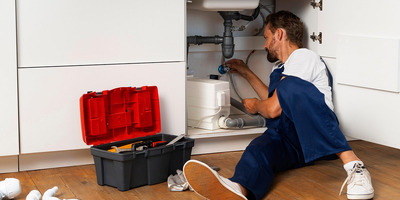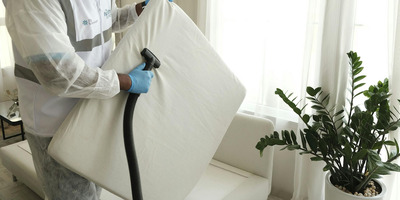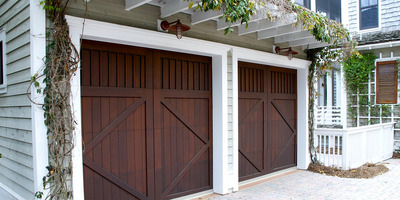Avoid These 10 Floor Renovation Slip-Ups
Avoid These 10 Floor Renovation Slip-Ups
Refinishing your floors sounds amazing when you picture a sleek finish, but turning that dream into something real is the tough part. There’s a lot to figure out, including a mountain of advice from experts to sort through. Fortunately, a well-executed floor renovation can transform your home. It looks different and also smells different. But only if you steer clear of the many mistakes that make a catastrophe. Whether you are merely remodeling one room or ripping the whole house apart, steering clear of what not to do saves you money and frustration in the future. In this article, we are going to look at the most common floor renovation mistakes and how you can make sure to stay away from them.
1. Failure to prepare properly
It's exciting to put down new flooring, but if you don't prepare in advance, you're asking for trouble in the future. So, you will want to inspect the subfloor for harm such as cracks, levelers, or dampness, and fix them beforehand. For example, if there is a dampness condition, you will have to place an anti-mold and moisture barrier protector integrated into the floor adhesive.
2. Selecting Style Over Function
It's easy to select the floor that just looks best on a model home floor, but a shiny one may not be child-friendly or pet-friendly. In addition, a floor that scratches easily or swells with water can lose its strength in no time at all. Therefore, consider all the factors that might affect your decision, including water damage as well, and then you can select materials that are suitable for the way you live.
3. Underestimating Material Costs
Homeowners always budget for the material only and not for the incidental expenses: underlayment, trims, glues, or delivery charges. And don't forget waste, especially when cutting around corners or rooms that aren't square. It is always best to buy 10% more than you think you will need. You don't want to be in the middle of the job and find out the batch you bought has been discontinued.
4. Ignoring the Condition of the Subfloor
Subfloors may not be the best-looking thing, but they're the foundation of your renovation. Not letting it get ruined, rot, or water beneath it can create ginormous issues down the line. If your floor feels spongy or you notice it's uneven, that's a red flag to stop and investigate before a new installation. Getting the foundation first will make that gorgeousness on top last a whole lot longer.
5. Forgetting About Expansion Gaps
Wood and laminate floors naturally expand and shrink with temperature and humidity changes. Therefore, forgetting to leave a small expansion gap near walls or doorways is one of the most costly mistakes to make. Without that breathing space, boards can buckle or lift. A good hardwood installer knows this trick well, and it’s worth keeping in mind if you’re taking the DIY route.
6. Poor Measurement and Cutting
A single incorrect measurement is all it takes to throw your entire pattern off. Rushed layout or skipping the double-checking process leads to poorly fitting seams or wasted fabric. Go slowly with the right tools, measure twice (maybe even three times), and mark carefully before cutting. Attentive preparation is the distinction between an amateur finish and a professional-looking one.
7. Failure to Make the Flooring Acclimate
Different kinds of flooring react to their environment, most notably wood. The boards will shrink or expand if you're installing them straight from the box, as they haven't yet adapted to your house temperature and moisture content. Always leave your floor in the room for 48 to 72 hours before installing it. This little trick can spare you from warping and ugly gaps in the future.
8. Leaving Out Moisture Barriers in Wet Areas
Bathrooms, kitchens, and basements share one thing in common, and that is being around water constantly. In addition, installing flooring over damp subfloors can result in mold, bulging, and expensive destruction that quickly multiplies. As mentioned before, a barrier of moisture is a simple layer of protection that will prevent your renovation from being destroyed. Even on a ground that appears to be dry, a barrier is worth considering.
9. Installing the Incorrect Adhesive or Fasteners
Different types of flooring must be installed with specific adhesives, nails, or clips. Employing the wrong type will result in squeaks, creaks, or even permanent damage. Always check the manufacturer's instructions first. If unsure, have your supplier or flooring specialist come over before opening that very first can of adhesive.
10. Rushing the Finish and Cleanup
After so much work, it's understandable to be eager to reap the rewards of your work right away. But to leave out the finishing touches is to spoil an otherwise excellent job. Remove dust or glue at once, and provide sufficient drying or curing time before putting furniture in the room. Patience here pays off in that your floors will be their finest and stay that way for years to come.
Conclusion
Floor remodeling isn't just about making your house look better; it's about creating a floor that holds up to the daily rush of life. Avoid these mistakes for results you'll be proud of and floors that will stay beautiful for years to come. Every home tells a story through its floors with the scuff marks from kids running, the shine from a morning’s sunlight, and the quiet comfort beneath your feet. Take the time to do it right, and you will not only love the result but also appreciate the care that went into every step.
By
Monika
More Services

Choosing A Data Room Without Regretting It Later
Choosing a virtual data room (VDR) affects how organizations manage and protect sensitive information. The right setup streamlines collaboration in M&A, fundraising, audits, and governance, while poor choices risk security issues. This guide outlines key VDR models, features, and controls.

Sewer Pipe Comparison: Which Material Suits Your Home Best?
Different sewer pipe types impact home drainage and repair costs. PVC, cast iron, and polypropylene each offer unique benefits. Choosing the right material depends on your specific needs. This article explains these options and helps you pick the best sewer pipe for your home.

Flagstone Landscaping: Benefits, Installation Tips, and Maintenance Guide
In this article, we explore flagstone as a durable, natural material ideal for walkways, patios, and garden paths. Flagstone resists shifting, heavy impact, and harsh weather, offering long-lasting strength and aesthetic appeal for outdoor landscaping projects.

Understanding Bail in Canada: A Guide to the Process
Being arrested in Canada can be confusing, with the bail hearing being a crucial step. Bail determines if an individual stays in jail or returns to society while awaiting trial. Understanding bail laws often requires an experienced lawyer to build a case and ensure proper representation.

The Heat Solution as an Effective Bed Bug Treatment
Bed bugs disrupt sleep and cause anxiety. Heat treatment, a popular and effective pest control method in Canada, raises temperatures to eliminate bed bugs at all stages. Understanding its process, benefits, and limitations helps homeowners choose the best solution for their situation.

Revamping Your Entryway: Innovative Garage Door Design
Design experts from HGTV assert that a simple garage door renovation can significantly transform your home's exterior. This guide will navigate you through revitalizing your entryway with cutting-edge garage door designs from premier decor websites.

Is your cobot configured for optimal performance?
Cobots are robots that are designed to work alongside human employees in various industries, from manufacturing and healthcare to warehousing and education. In this article, we will look at the importance of maximizing your cobot’s productivity.

Should A Piano Be Tuned Before Moving?
The piano is one of the biggest, heaviest, and most sensitive musical instruments. Of course, the delivery of a piano or grand piano expects extremely cautious and thorough operation in all aspects, including setting up, using, storing, and, most importantly, transportation.